What Do Russians Read for News, and
How Can Independent Media Reach Them?
How Can Independent Media Reach Them?
Alesya Sokolova
September 3, 2025

Introduction
Despite censorship, independent media continue operating in Russia. Their primary platform is Telegram, where channels spanning the political spectrum coexist. Yet “pro-government” ones significantly outperform their “opposition” counterparts: our survey reveals that 44% of Telegram users subscribe to the former versus just 14% for the latter. Cedar has conducted an extensive analysis of dozens of channels consumed by both government supporters and critics to understand these dynamics and develop recommendations for independent media.
Key findings
● 44% of people reading Telegram channels in Russia read pro-government media, and 14% read opposition ones, as determined by a telephone survey.
● In addition to pro-government and opposition news media, there is a group of "neutral" channels, among whose audience there are people with less radical positions, and sometimes both supporters and opponents of the Ukraine war.
● Neutral channels focus more on everyday news, such as the economy (with attention to domestic, not international, events), emergencies (fires, utility failures, abnormal weather), health news, food, and science.
● Opposition media tend to cover a narrower range of topics versus pro-government and neutral channels. Specifically, the variety of subjects covered by opposition channels is about one third to two fifths that of pro-government channels and one half to two thirds that of neutral channels. Opposition channels focus on issues that are not covered by other media (e.g., repression and consequences of the war), but the range of these issues is quite limited.
● On average, opposition-channels contain 30% less positive and 15% more negative posts than in “pro-government”channels. “Neutral” channels fall between “pro-
government” and “oppositional” ones on this parameter.
● Channels with more positive content tend to be more popular (p = 0.02). For pro-government media, this is achieved by presenting Russia in a positive light, but the correlation between popularity and positivity also exists among opposition media (p = 0.05).
● The level of emotionality in content is not correlated with popularity: both neutral channels in their coverage of events and other channels with more emotional presentation can be popular. The share of content about the war is also not correlated with popularity.
● To expand their audience, independent media can:
○ cover a broader range of topics;
○ focus more on everyday issues like the economy (price hikes and interest rates), emergencies in Russia, and health-related news;
○ create more positive content, including news about culture, animals, life stories, as well as selections of films, photos, music, and memes.
Telegram's rise as Russia's primary news source
Independent media are under unprecedented pressure in Russia. The state blocks access to them, designates them as "foreign agents" and "undesirable organizations," and cuts off advertising and donation streams. Russia now ranks 162nd out of 180 countries in press freedom. State propaganda enjoys virtually unlimited resources for distribution and promotion.
Nevertheless, independent media maintain some reach: over a third of Russians employ VPNs to circumvent blocks, while Telegram remains the most popular social network with 51% daily usage.
According to Mediascope, 55% of Telegram's top channels are related to news or politics. The platform's role as a news source has grown dramatically — reportedly from zero to 28% of the population between 2019 and 2024. Telegram has effectively become Russians' primary source for political information.
These factors led us to focus our research on Telegram. Through a telephone survey, we identified 79 popular channels, including 36 news outlets. We supplemented these with seven less-popular independent media channels for comparative analysis, examining 43 news channels total. According to the survey, 44% of respondents in Russia read pro-government media, while 14% read opposition media.
Despite censorship, independent media continue operating in Russia. Their primary platform is Telegram, where channels spanning the political spectrum coexist. Yet “pro-government” ones significantly outperform their “opposition” counterparts: our survey reveals that 44% of Telegram users subscribe to the former versus just 14% for the latter. Cedar has conducted an extensive analysis of dozens of channels consumed by both government supporters and critics to understand these dynamics and develop recommendations for independent media.
Key findings
● 44% of people reading Telegram channels in Russia read pro-government media, and 14% read opposition ones, as determined by a telephone survey.
● In addition to pro-government and opposition news media, there is a group of "neutral" channels, among whose audience there are people with less radical positions, and sometimes both supporters and opponents of the Ukraine war.
● Neutral channels focus more on everyday news, such as the economy (with attention to domestic, not international, events), emergencies (fires, utility failures, abnormal weather), health news, food, and science.
● Opposition media tend to cover a narrower range of topics versus pro-government and neutral channels. Specifically, the variety of subjects covered by opposition channels is about one third to two fifths that of pro-government channels and one half to two thirds that of neutral channels. Opposition channels focus on issues that are not covered by other media (e.g., repression and consequences of the war), but the range of these issues is quite limited.
● On average, opposition-channels contain 30% less positive and 15% more negative posts than in “pro-government”channels. “Neutral” channels fall between “pro-
government” and “oppositional” ones on this parameter.
● Channels with more positive content tend to be more popular (p = 0.02). For pro-government media, this is achieved by presenting Russia in a positive light, but the correlation between popularity and positivity also exists among opposition media (p = 0.05).
● The level of emotionality in content is not correlated with popularity: both neutral channels in their coverage of events and other channels with more emotional presentation can be popular. The share of content about the war is also not correlated with popularity.
● To expand their audience, independent media can:
○ cover a broader range of topics;
○ focus more on everyday issues like the economy (price hikes and interest rates), emergencies in Russia, and health-related news;
○ create more positive content, including news about culture, animals, life stories, as well as selections of films, photos, music, and memes.
Telegram's rise as Russia's primary news source
Independent media are under unprecedented pressure in Russia. The state blocks access to them, designates them as "foreign agents" and "undesirable organizations," and cuts off advertising and donation streams. Russia now ranks 162nd out of 180 countries in press freedom. State propaganda enjoys virtually unlimited resources for distribution and promotion.
Nevertheless, independent media maintain some reach: over a third of Russians employ VPNs to circumvent blocks, while Telegram remains the most popular social network with 51% daily usage.
According to Mediascope, 55% of Telegram's top channels are related to news or politics. The platform's role as a news source has grown dramatically — reportedly from zero to 28% of the population between 2019 and 2024. Telegram has effectively become Russians' primary source for political information.
These factors led us to focus our research on Telegram. Through a telephone survey, we identified 79 popular channels, including 36 news outlets. We supplemented these with seven less-popular independent media channels for comparative analysis, examining 43 news channels total. According to the survey, 44% of respondents in Russia read pro-government media, while 14% read opposition media.
Figure 1: Share of respondents who read pro-government and oppositional channels

Our analysis of audience overlaps, combined with the data about political orientation of readers acquired from the survey, allowed us to categorize channels into three groups: "pro-government," "neutral," and "opposition." We defined neutral channels as those attracting readers from across the political spectrum — war supporters, war opponents, and undecided.
The detailed methodology can be found in the full article.
Content patterns across media categories
We examined how these three groups of channels differ in terms of content, language, and tone by analyzing three months of posts (September-November 2024), distinguishing between shared news events and unique content.
Pro-government channels
While the Ukraine conflict remains central for most pro-government media, they frame it through international politics, emphasizing Russia's confrontation with the West. This topic comprises 12.5% of their news posts, versus 6.9% in opposition media.
These channels emphasize Putin's international activities, particularly his engagement with BRICS leaders. Economic news is presented in a positive light, often highlighting gas trade. Coverage of legislation and social issues frequently focuses on migration, with notably negative attitudes toward migrants. Reports of shell, missile or drone strikes appear as brief summaries, primarily covering Ukrainian attacks on Russian territories.
Notably, these channels have largely abandoned the official “special military operation,” now preferring "the conflict" or simply "the war."
The detailed methodology can be found in the full article.
Content patterns across media categories
We examined how these three groups of channels differ in terms of content, language, and tone by analyzing three months of posts (September-November 2024), distinguishing between shared news events and unique content.
Pro-government channels
While the Ukraine conflict remains central for most pro-government media, they frame it through international politics, emphasizing Russia's confrontation with the West. This topic comprises 12.5% of their news posts, versus 6.9% in opposition media.
These channels emphasize Putin's international activities, particularly his engagement with BRICS leaders. Economic news is presented in a positive light, often highlighting gas trade. Coverage of legislation and social issues frequently focuses on migration, with notably negative attitudes toward migrants. Reports of shell, missile or drone strikes appear as brief summaries, primarily covering Ukrainian attacks on Russian territories.
Notably, these channels have largely abandoned the official “special military operation,” now preferring "the conflict" or simply "the war."
Figure 2: Clusters of pro-government channels by events topics

Opposition channels
Opposition media prioritize coverage of political persecution, which constitutes 16.5% of their news content. They frequently report on politically motivated prosecutions and repressive legislation.
Their war coverage proportions mirror other channel types: 8.7% overall on air attacks, 4.1% on battlefield developments, and 6.9% on Ukraine-related international politics. However, their perspective differs markedly: They emphasize casualties, destruction, and Russian attacks. Their international coverage focuses on Russian actions and Western support for Ukraine rather than broad East-West confrontation.
Their economic reporting concentrates on fiscal policy, interest rate hikes, major companies, military spending, exchange rates, and sanctions.
Opposition media prioritize coverage of political persecution, which constitutes 16.5% of their news content. They frequently report on politically motivated prosecutions and repressive legislation.
Their war coverage proportions mirror other channel types: 8.7% overall on air attacks, 4.1% on battlefield developments, and 6.9% on Ukraine-related international politics. However, their perspective differs markedly: They emphasize casualties, destruction, and Russian attacks. Their international coverage focuses on Russian actions and Western support for Ukraine rather than broad East-West confrontation.
Their economic reporting concentrates on fiscal policy, interest rate hikes, major companies, military spending, exchange rates, and sanctions.
Figure 3: Clusters of oppositional channels by events topics

Neutral channels
This diverse category attracts readers of different political orientations. It includes channels focusing on lifestyle news, crime reporting, economic analysis, and international politics.
Neutral channels emphasize everyday concerns, particularly the economy (8.8% of posts versus 4.1% in opposition and 3.0% in pro-government channels). They prioritize domestic issues like price fluctuations and interest rates. Coverage of emergencies, such as fires, infrastructure failures, and extreme weather, is more frequent (5.8% versus 2.3% in opposition channels). Health, food, and science news also receive more coverage (4.1% versus 0.8% in opposition media).
While covering the war, neutral channels avoid the emotional framing common in pro-government media. They still report more on Russian attacks than Ukrainian ones, mentioning civilian casualties more than pro-government channels but less than opposition ones.
This diverse category attracts readers of different political orientations. It includes channels focusing on lifestyle news, crime reporting, economic analysis, and international politics.
Neutral channels emphasize everyday concerns, particularly the economy (8.8% of posts versus 4.1% in opposition and 3.0% in pro-government channels). They prioritize domestic issues like price fluctuations and interest rates. Coverage of emergencies, such as fires, infrastructure failures, and extreme weather, is more frequent (5.8% versus 2.3% in opposition channels). Health, food, and science news also receive more coverage (4.1% versus 0.8% in opposition media).
While covering the war, neutral channels avoid the emotional framing common in pro-government media. They still report more on Russian attacks than Ukrainian ones, mentioning civilian casualties more than pro-government channels but less than opposition ones.
Figure 4: Clusters of neutral channels by events topics

Key distinctions
The three categories cover the war and domestic politics with vastly different perspectives. Pro-government channels are the most positively, neutral channels somewhat less so, while opposition channels offer mostly negative coverage of these topics.
Popularity factorsImpact of tone
Our data reveals positive content correlates with greater popularity (p = 0.02), as measured by survey mentions. The most positive channels are also the most pro-government, which may reflect either ideological alignment with their audience’s views or state promotional support for pro-government channels, or both.
The three categories cover the war and domestic politics with vastly different perspectives. Pro-government channels are the most positively, neutral channels somewhat less so, while opposition channels offer mostly negative coverage of these topics.
Popularity factorsImpact of tone
Our data reveals positive content correlates with greater popularity (p = 0.02), as measured by survey mentions. The most positive channels are also the most pro-government, which may reflect either ideological alignment with their audience’s views or state promotional support for pro-government channels, or both.
Figure 5: More positive Telegram channels are proving to be more popular

We found a negative correlation between positivity and antiwar audience share. When controlling for audience political orientation, the relationship between tone and popularity loses statistical significance, making it difficult to isolate whether positivity or political alignment drives popularity. However, analyzing opposition media separately, we discovered that more positive opposition channels attract larger audiences (p = 0.05).
Figure 6: Opposition media on Telegram with positive content are more popular

Media researcher Ilya Yablokov confirms that positive content attracts audiences: "If the news of the day consists not only of horrors and floods in Orenburg, but you also talk about the Berlin Film Festival, people will come to you for positive news."
Diversity of topics
Without affecting popularity, channel specialization varies widely. The top channels focus on military analysis, international politics, lifestyle news, crime reporting, or economic analysis.
War coverage levels do not correlate with popularity — high proportions of war-related content do not determine channel size.
However, opposition channels demonstrate notably higher topic similarity than the other media categories. While we cannot confirm that this directly reduces their popularity, it may contribute to their limited reach.
Diversity of topics
Without affecting popularity, channel specialization varies widely. The top channels focus on military analysis, international politics, lifestyle news, crime reporting, or economic analysis.
War coverage levels do not correlate with popularity — high proportions of war-related content do not determine channel size.
However, opposition channels demonstrate notably higher topic similarity than the other media categories. While we cannot confirm that this directly reduces their popularity, it may contribute to their limited reach.
Figure 7: Oppositional channels are thematically more similar to each other

King's College London researcher Gregory Asmolov suggests that the opposition media's topic homogeneity stems from their self-assigned role: filling gaps left by state and neutral media. These gaps —coverage of persecution and consequences of the war — are highly specific, thus creating content homogeneity.
Conclusion
Through the survey data and machine learning analysis, we have identified significant differences in the popularity and content strategies of different media categories on Telegram. The data reveals that pro-government channels maintain a substantial popularity advantage over their opposition counterparts, attracting 44% of Telegram news readers versus just 14%.
Our analysis demonstrates clear patterns: opposition channels focus on a narrower range of topics, primarily covering political persecution and the war’s consequences, while maintaining a more negative tone than other channel types. In contrast, neutral channels manage to attract diverse audiences by emphasizing everyday concerns such as the economy, emergencies, and health news.
Sociologist Maxim Alyukov notes audience fatigue with repetitive content. Even antiwar audiences report exhaustion from hearing identical messages repeatedly. He emphasizes that relevance drives engagement — negative news must connect to readers' personal experiences to hold their interest. At the same time, he observes that opposition media face conflicting demands: Russian audiences want less political content, while international readers expect the opposite.
Although the problems are clear, implementing solutions to them is not as easy as it may look like. Editorial decisions must align with each outlet's mission and priorities. As Asmolov reminds us, informing and entertaining are different functions, and media experimenting with formats must remember their primary purpose.
Conclusion
Through the survey data and machine learning analysis, we have identified significant differences in the popularity and content strategies of different media categories on Telegram. The data reveals that pro-government channels maintain a substantial popularity advantage over their opposition counterparts, attracting 44% of Telegram news readers versus just 14%.
Our analysis demonstrates clear patterns: opposition channels focus on a narrower range of topics, primarily covering political persecution and the war’s consequences, while maintaining a more negative tone than other channel types. In contrast, neutral channels manage to attract diverse audiences by emphasizing everyday concerns such as the economy, emergencies, and health news.
Sociologist Maxim Alyukov notes audience fatigue with repetitive content. Even antiwar audiences report exhaustion from hearing identical messages repeatedly. He emphasizes that relevance drives engagement — negative news must connect to readers' personal experiences to hold their interest. At the same time, he observes that opposition media face conflicting demands: Russian audiences want less political content, while international readers expect the opposite.
Although the problems are clear, implementing solutions to them is not as easy as it may look like. Editorial decisions must align with each outlet's mission and priorities. As Asmolov reminds us, informing and entertaining are different functions, and media experimenting with formats must remember their primary purpose.
This does not take into account the additional 2% tax on personal income above a certain threshold. The tax was introduced in January 2021. These tax revenues are earmarked and go directly to a state extra-budgetary fund tasked with providing medicine and equipment for children with rare diseases.
Article 354.1 of the Criminal Code is called Rehabilitation of Nazism, but this name is very misleading and describes only a small part of the real composition of the article.
In 2020, the Supreme Court declared AUE an extremist organization, which however is not an organization, and not even a subculture, but rather a complex social phenomenon that includes the commercialization of criminal romance, the activities of teenage and youth groups based on that, and elements of self-organization of the criminal world (Gromov, 2022).
This is a motley movement of people who deny the collapse of the USSR and do not recognize the authority of the Russia (Akhmetiev, 2022).
Sergei Chapnin even believes a new civil religion is taking shape (Chapnin, 2022).
The eternal flame is a memorial to the heroes of the Great Patriotic War, widely seen across the former USSR, in the form of a fire constantly burning in the center of a star.
This uses the colors of the prerevolutionary Cross of St George and the Soviet Order of Victory. It became a symbol in 2014 of the so-called “Russian Spring” and then of the new official patriotism. The St George’s ribbon is the only symbol of military glory established by law.
This data is not published.
The most common grounds for administrative cases for online statements can be found in (Talanova, 2024).
For example, Arseny Turbin, a teenager, was sentenced to five years in prison under Part 2 of Article 205.5 of the Criminal Code (SOVA, 2024).
According to Ministry of Internal Affairs statistics, cases have approximately tripled every year starting from 2022. This was also the case in 2024 (MIA, 2025).
The total figures were presented by Bastrykin in his report recapping 2024 (ICRF, 2025).
SUBSCRIBE TO OUR NEWSLETTER
SUBSCRIBE TO OUR NEWSLETTER
-
Alesya Sokolova
Senior researcher at Center for Data and Research on Russia (Cedar)
